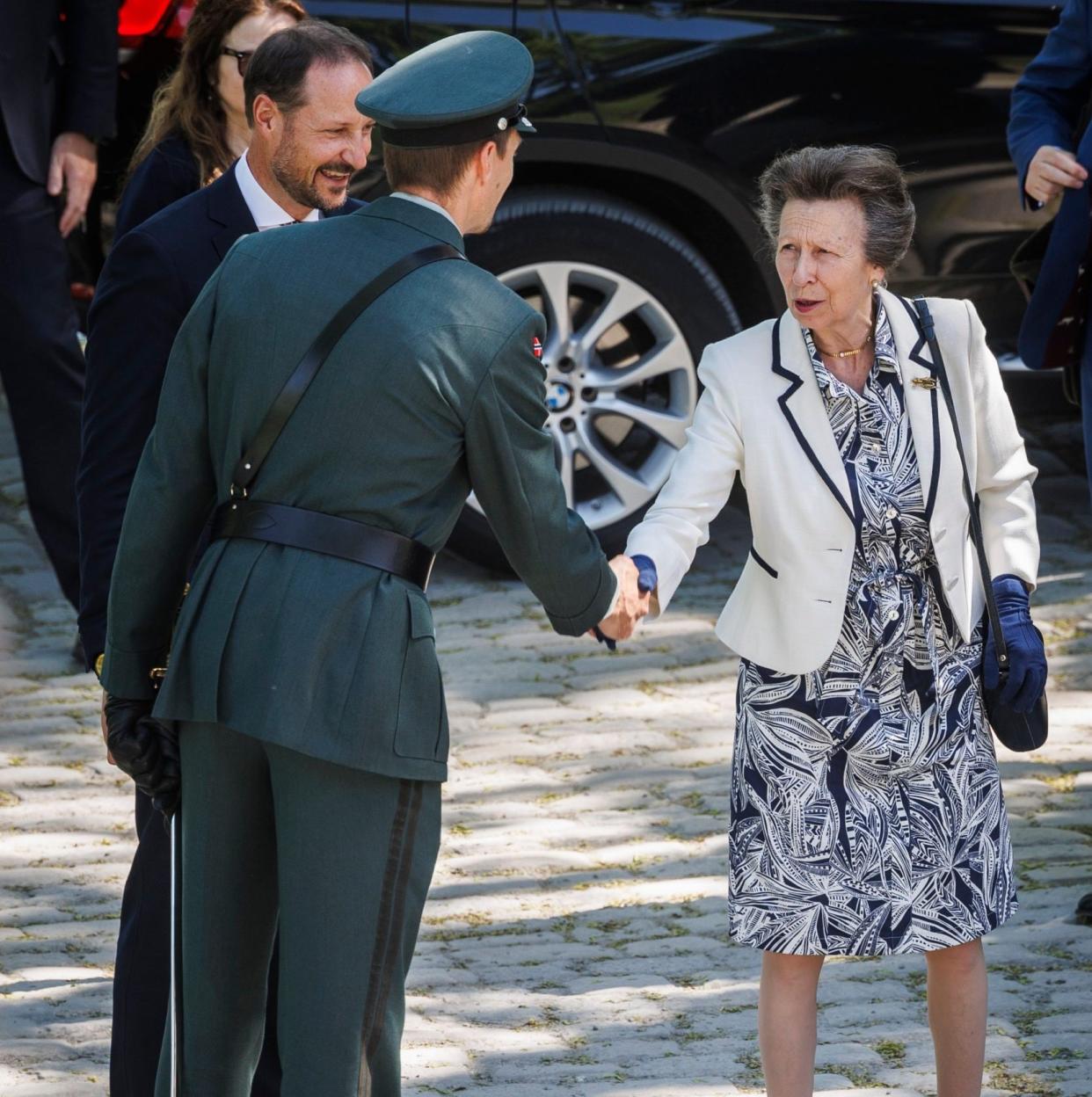Princess Anne visits Norway site of secret operation to stop Nazi atomic bomb

The Princess Royal has visited the site of a secret operation to stop the Nazi atomic bomb in Norway as she celebrated the “very special people involved” in the country’s wartime relationship with the UK.
The Princess spent two days in Norway, with a visit to the site of the little-known Operation Gunnerside where she laid flowers at the memorial.
The Second World War operation in 1943 saw a Norwegian team dropped by parachute to infiltrate a hydroelectric plant where the Nazis were developing “heavy water” to build an atomic bomb.
They destroyed the containers, escaping on skis for the 200 miles to Sweden, with the Special Operations Executive (SOE) action later considered the most successful sabotage of the war.
Soon afterwards, German forces attempted to move the remaining supplies of heavy water, which were used to create a heavy hydrogen isotope to use as a moderator in nuclear reactors, by ferrying the Hydro. It was sunk by a resistance bomb with passengers including Norwegian families on board.
During her visit, the Princess met a senior local police officer who had a relative who survived the Hydro sinking as well as members of the Norwegian armed forces.
The royal visit was intended to raise public awareness of the operation and was arranged by John Andrews and Dr Tony Insall, the British author of Secret Alliances: Special Operations and Intelligence in Norway 1940-1945.

In a speech at the Industrial Workers Museum in Vemork, where there is a memorial to Operation Gunnerside, Princess Anne said: “There is always more that can be done to remind future generations just how remarkable the wartime relationship between our two countries was and the very special people involved.”
The Princess, who is patron of the Anglo-Norwegian Resistance Commemoration Project, went on to launch a competition to select a Norwegian sculptor to create a statue to “commemorate the bravery of those Norwegians and British who risked their lives in the campaign to restore freedom in Norway”.
Previously she had met Joachim Rønneberg, a leading figure of the Norwegian resistance, and members of the Linge Company, a Norwegian unit of the SOE.
“I know, from having spoken to Joachim and others, just how important Op Gunnerside was in disrupting the supply of heavy water to the Germans and helping to prevent Germany from acquiring atomic weapons,” said the Princess.
“But success came at a cost, and we remember the tragic loss of life of both commandos and aircrew involved in Op Freshman, the first attempt to sabotage the plant which sadly failed.
“We remember also those who died later on the Hydro ferry. The building we are standing in today and the displays in the main museum are a wonderful tribute to those brave men and those who helped them who risked everything.”
Writing about the visit, Dr Insall and Mr Andrews said: “At the end of World War Two neither the British nor Norwegian governments made any public acknowledgement of the close cooperation between SIS [Secret Intelligent Services] and SOE, and the Norwegian resistance groups, the Linge Company and Milorg.
“This was unfortunate given the significant contribution of their work to the Allied war effort but was due to the secrecy surrounding British intelligence operations.
“The situation has now changed, and it has become possible to acknowledge the extent of the remarkable achievements on which Britain and Norway cooperated.”


